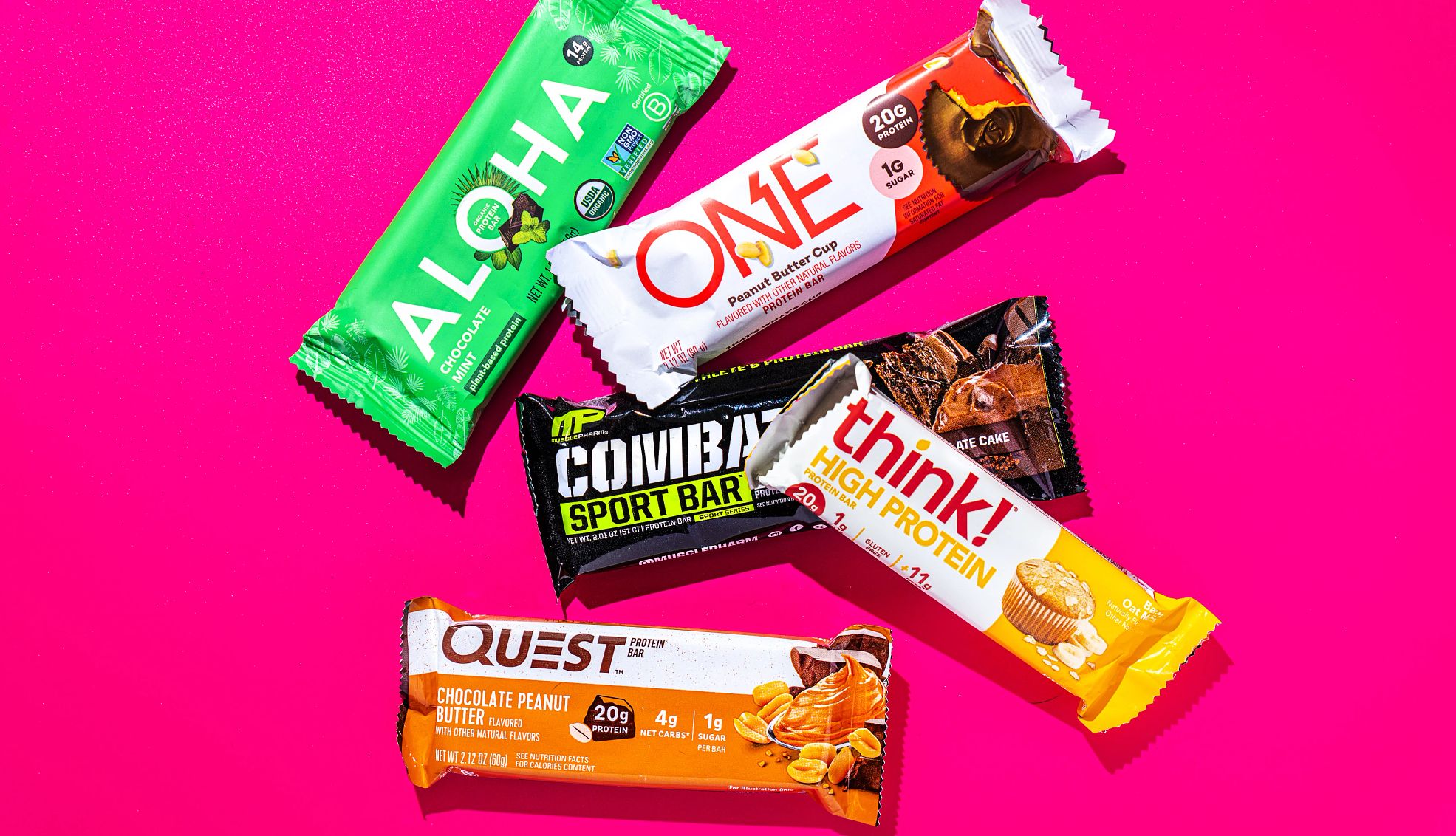
- Select a language for the TTS:
- UK English Female
- UK English Male
- US English Female
- US English Male
- Australian Female
- Australian Male
- Language selected: (auto detect) - EN
Play all audios:
The best protein bars deliver a lot of protein without too much sugar. Noah Fecks Facebook Twitter LinkedIn
What if you could solve one of your biggest health risks with a candy bar?
OK, not technically a candy bar, but something that looks (and tastes) an awful lot like one? I’m talking about protein bars — those chewy, often chocolaty treats that can not only satisfy a
sweet tooth or a grumbling belly, but also help you retain muscle and, in the process, reduce your risk of several age-related diseases.
Think! High Protein Banana Oat Muffin bars offer at least 10 grams of protein. Noah Fecks The Best Protein Bars
Like other sweet treats, protein snacks come in all shapes and sizes: round cookies, rectangular bars, square brownies, even “Oreo”-style sandwiches. And traditional candy manufacturers are
even getting into the game: Snickers, M&M's, Bounty and Mars bars come in high-protein varieties with 5 to 22 grams of protein and 2 to 14 grams sugar.
Here are some choices that offer at least 10 grams of protein, less than 7 grams of sugar and at least 3 grams of fiber:
ALOHA Chocolate Mint Protein Bars: 220 calories, 14 g protein, 10 g fiber, 5 g sugar
Quest Hero Protein Bars Chocolate Peanut Butter: 200 calories, 18 g protein, 4 g fiber, 1 g sugar
ONE Peanut Butter Cup: 220 calories, 20 g protein, 8 g fiber, 1 g sugar
Combat Chocolate Cake Bar: 250 calories, 20 g protein, 5 g fiber, 5 g sugar
Think! High Protein Banana Oat Muffin: 200 calories, 20 g protein, 11 g fiber, 1 g sugar
As we age, our protein needs change. Our bodies have a harder time converting the protein we eat into muscle mass, which means we need more protein throughout the day to build and maintain
muscle. Indeed, muscle mass begins to decline when we hit middle age, decreasing by 3-10 percent each decade after that (based on lifestyle and genetics).
That loss of muscle increases our risk of everything from diabetes and heart disease to frailty and injury.
Research suggests that women at midlife and beyond should eat at least 25 grams of protein three times a day (breakfast, lunch and dinner). For men, that number is about 30 grams.
While your size and physical activity level may alter those calculations, that’s a pretty solid overall plan, and one that fits in with the way we tend to eat: 3 ounces of lean ground beef,
pork tenderloin, lean steak or skinless turkey or chicken breast has 20 to 30 grams of protein each; a cup of Greek yogurt or cottage cheese will give you about 25 grams. Eat like that at
all three meals, throw in some whole grains, nuts, legumes or vegetables for extra protein, and you’re all set.
But it isn’t always that easy. Sometimes we can’t fit in a whole meal, or we wind up with something — a few slices of pizza for dinner or a piece of toast at breakfast — that just doesn’t
deliver the protein we need. That’s where protein bars can help.
“I have many clients who have started supplementing protein bars or protein shakes at meals that they were previously skipping,” says Haley O’Connor, a registered dietitian in Mobile,
Alabama. “This has helped them have better energy levels and eat less (later in the day and at night) because they’re full throughout the day, which ultimately results in weight loss.”



